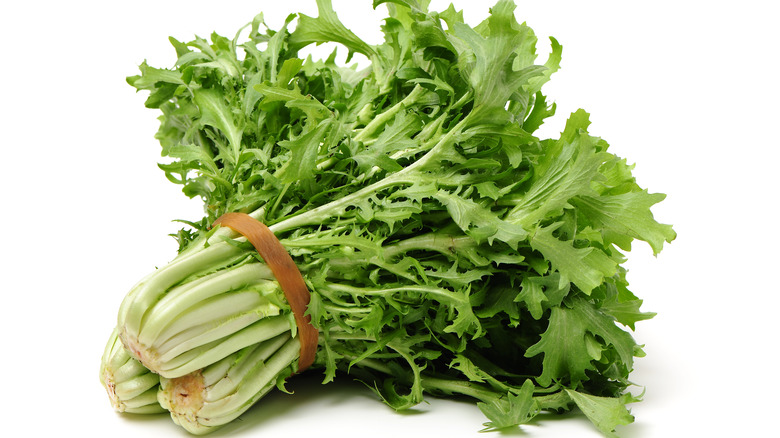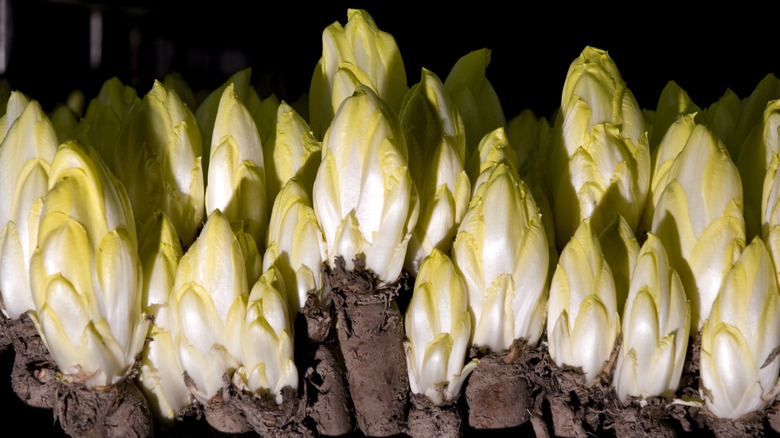The Difference Between Endive And Escarole
Despite the fact that they all technically fall under the category of endive, there certainly are plenty of differences between food that we refer to as endives and that which we know as escarole. Yes, they are all green, leafy vegetables that tend to fall into the bitter side of the veggie spectrum. And yes, they're all related to chicory, but what are the real differences and how do you utilize them differently? As a piece from Colorful Plates breaks it down, there are three types we should know—curly endives, the Belgian endive, and escarole (above).
Curly endives, or frisée as it's also known, almost look like something you might find on the ocean floor. The leaves are, as one would imagine, curly and often bright which make for a perfect kick in what might otherwise be a boring salad. Especially the inner leaves of the curly endive, as Colorful Plates suggests.
Distinguishing Belgian endives from escarole
Belgian endives (above) are a bit of a different animal altogether. Even though they may look like budding flowers, The Spruce Eats explains that frisée's Belgian cousins are actually grown in the dark. On account of the amount of work that goes into harvesting these six-inch-long, little veggies, Belgian endives tend to be a rather expensive treat, but nonetheless, their crunchy texture and bitterness are great for adding a little pizazz to your average salad.
Last, but by no means least, you have escarole. According to the Online Etymology Dictionary, its (linguistic) root is the Latin word "esca," which means food. In Medieval Latin, "escariola" simply meant "something edible." Whether the name is reassuring or not, escarole's long history is a testament to the vegetable itself. Foodiosity notes that not only is escarole slightly less bitter than its endive kin; it also has plenty of other virtues. Of course, you can cook with both curly or Belgian endives, but this lettuce-looking veggie lends itself to many uses. From pasta and side dishes to wrapping fish or meats in its leaves to add a little something extra.
Like red onions, white onions, and shallots, this trio has its own particulars, uses, and people who love them. Which is your favorite?

